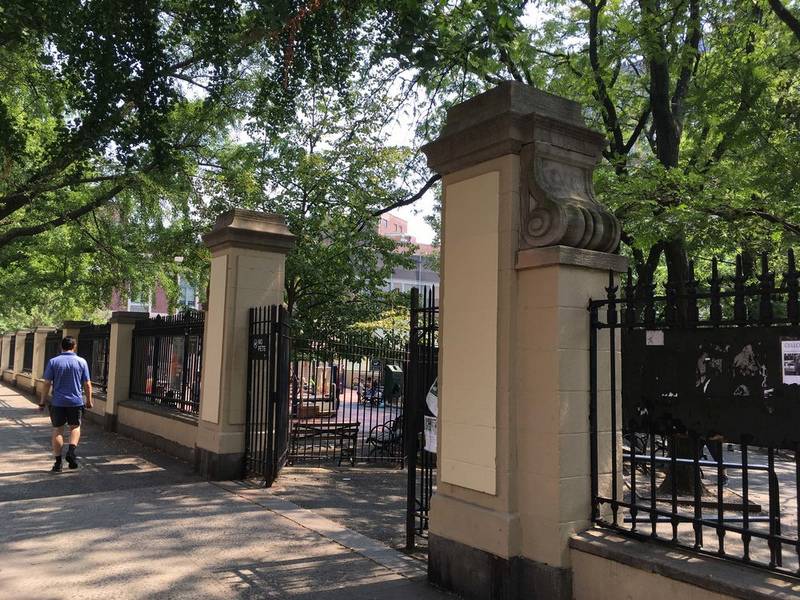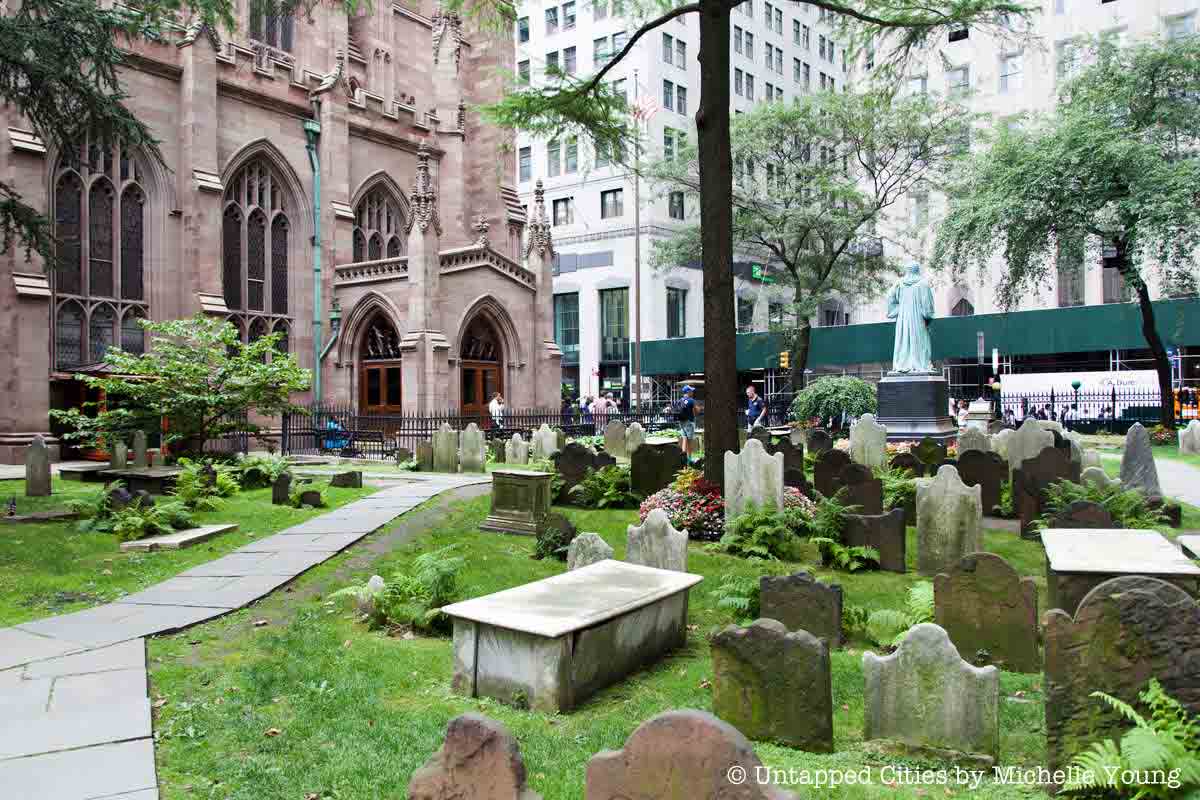3. St. John’s Cemetery
 Photo by Marc Gordon
Photo by Marc Gordon
Trinity’s third cemetery was located on the east side of Hudson Street between Clarkson and Leroy Street in Greenwich Village. The cemetery served as a burying ground between 1805 and 1852 for the poor and middle class. It is believed that 10,000 burials occurred there. This cemetery was associated with St. John’s Chapel on Varick Street, a magnificent example of Georgian architecture designed in 1807 by John McComb, the architect of City Hall. The Chapel fronted a park which created one of the most exclusive residential neighborhoods in New York.
To the shock of local residents, the parish sold the park to the Hudson River Rail line in 1867, which used it as a freight terminal. Subsequently, the parishioner’s attendance dwindled along with much of the residential neighborhood. The cemetery fell into a state of disrepair. After a five year legal battle the city took over the cemetery in 1895 under the Small Parks Act for conversion into a park.
In 1896 the city announced that families wishing to remove remains to do so, but only 250 graves were removed. By 1898 construction of the James J. Walker Park was completed. In 1912, the city widened Varick Street for the extension of the subway and St. John’s Chapel was demolished. James Walker Park has a softball field, swimming pool, playground, and a bocce court. Most visitors have no idea what lies below their feet. But near the fence line along Leroy Street is a remnant of what was there before. A firefighter’s memorial for two firemen belonging to the Eagle Fire Engine Company who lost their lives in the line of duty remains as a reminder of the Parks past incarnation.






